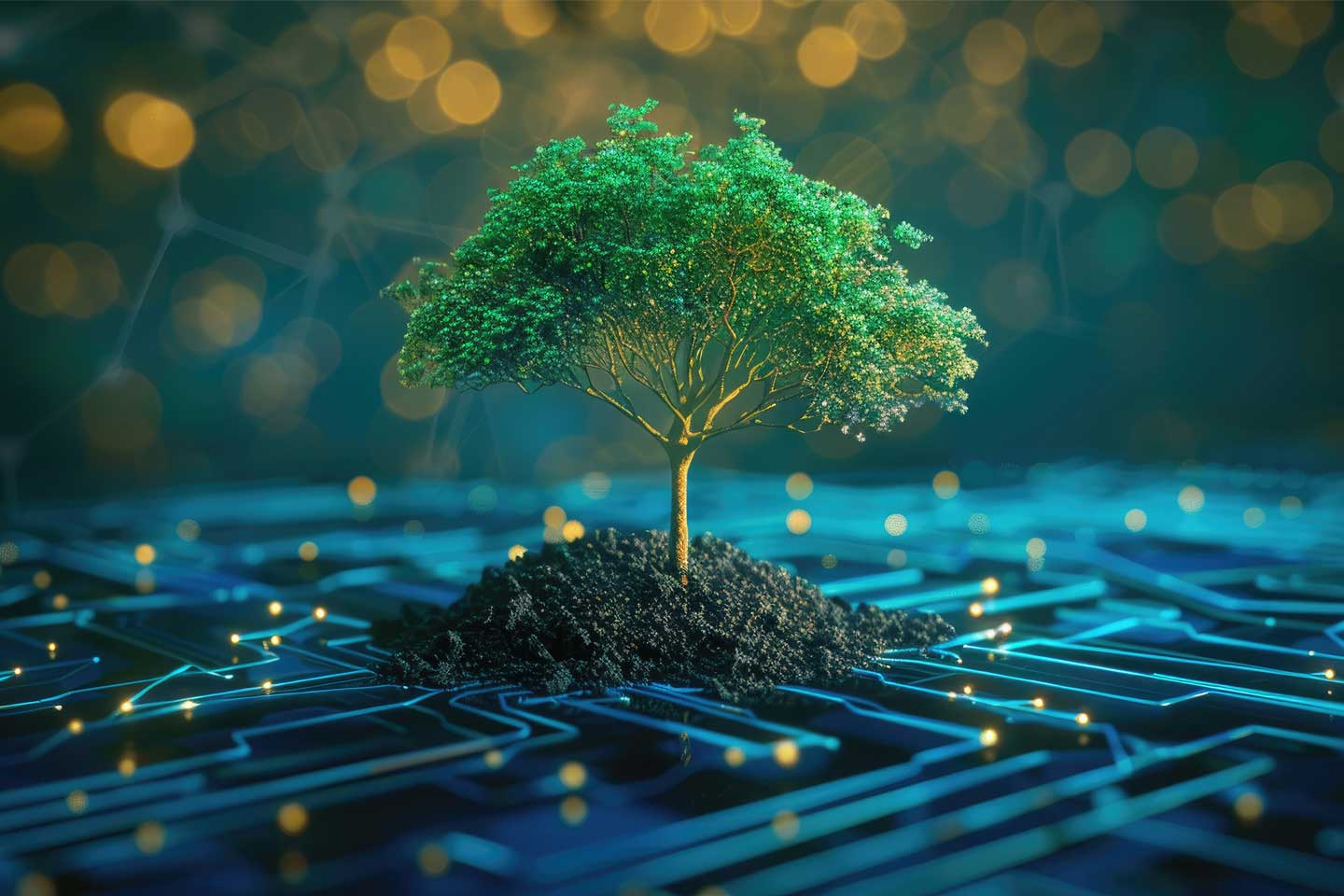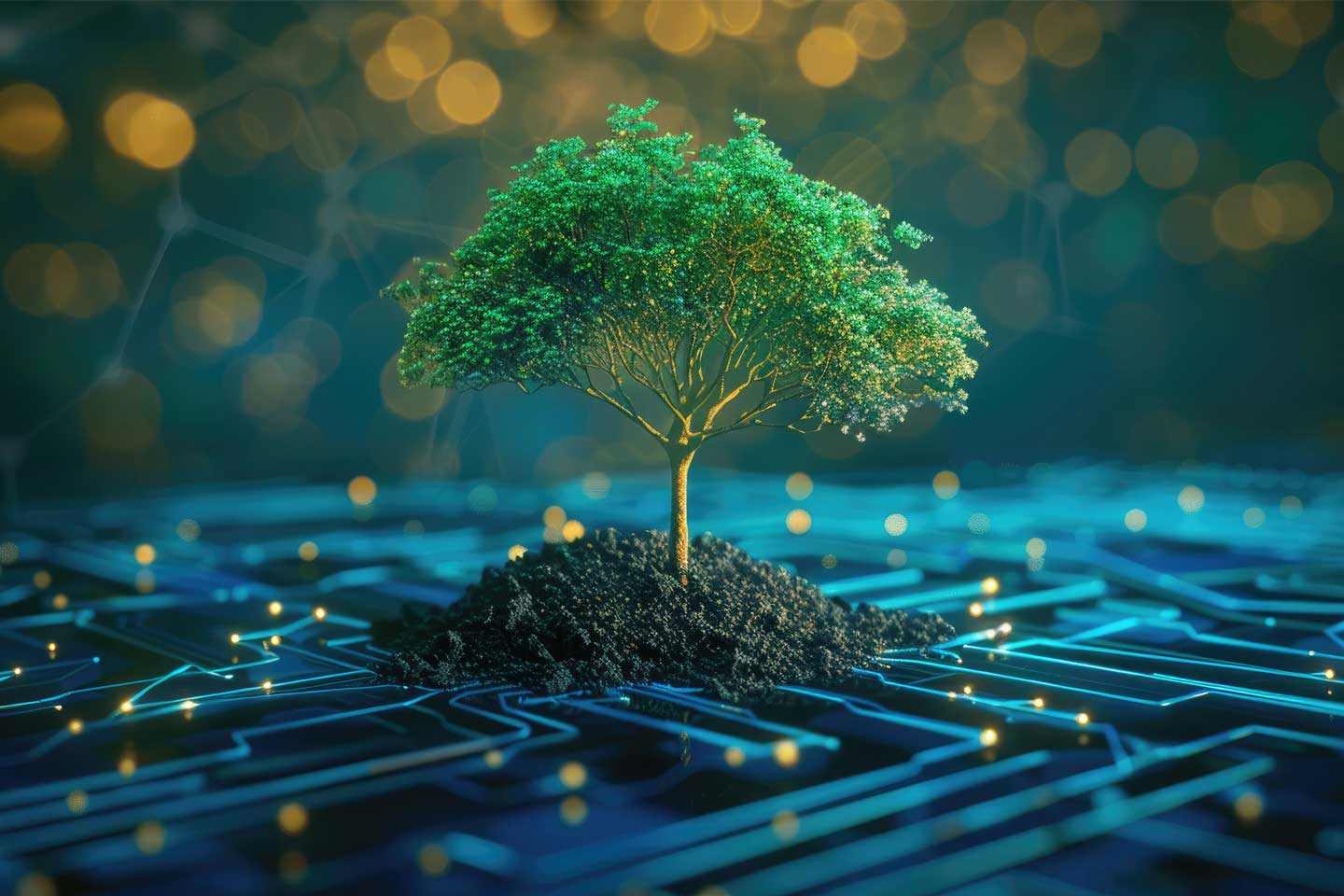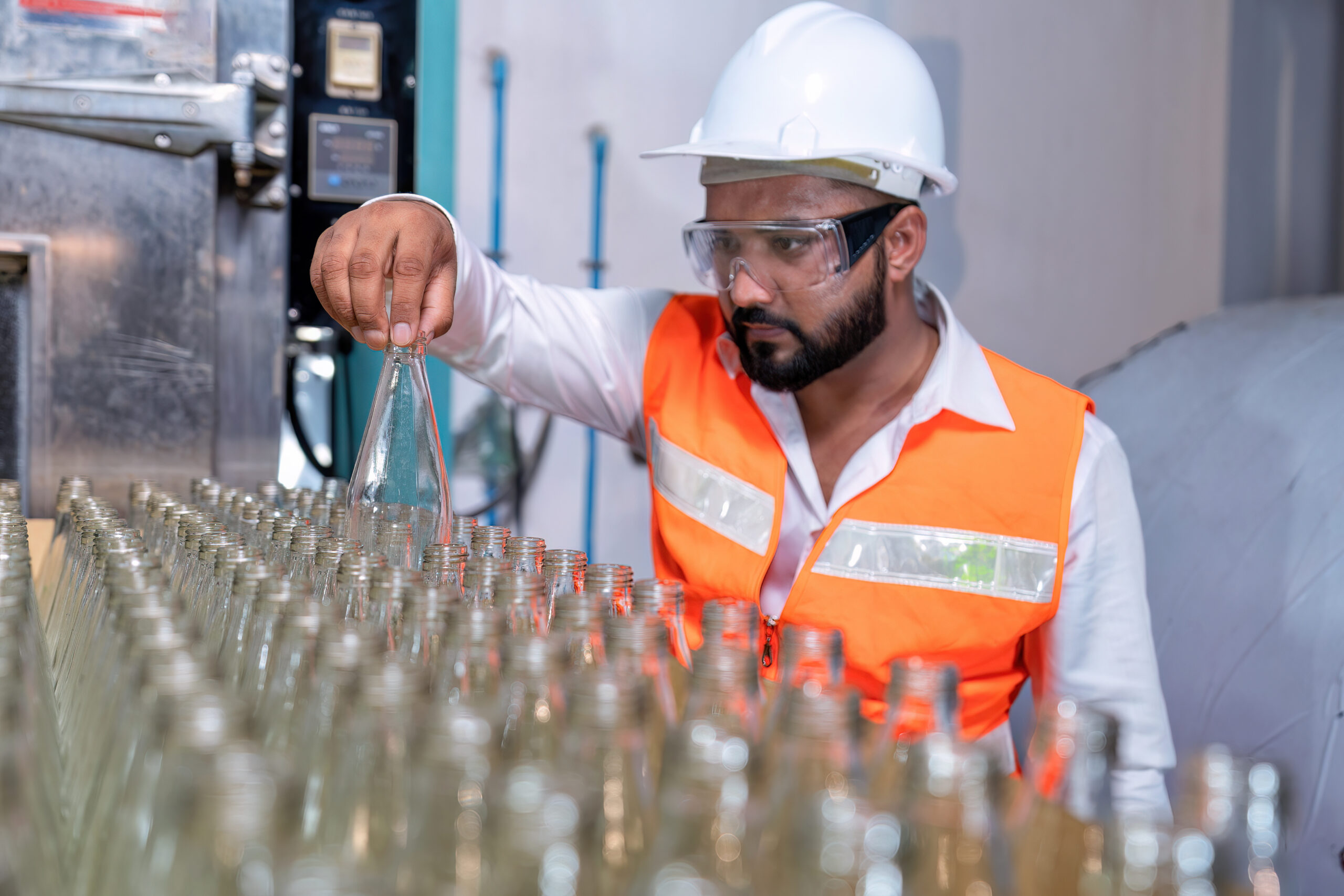
Sustainable Technology: Your Essential Guide to Reducing Your Environmental Impact
In a world increasingly aware of climate change and resource depletion, the concept of sustainable technology has moved from a niche topic to a global imperative. It’s no longer just about making things work; it’s about making them work in a way that protects our planet for future generations.
If you’re new to the idea of "green tech" or "eco-friendly innovation," don’t worry! This comprehensive guide will break down what sustainable technology is, why it’s so important, and how you can embrace it to reduce your own environmental footprint.
What Exactly is Sustainable Technology?
At its heart, sustainable technology (also known as green technology or eco-tech) refers to any innovation, product, or process designed to minimize negative human impact on the environment. Think of it as technology with a conscience – it aims to meet our current needs without compromising the ability of future generations to meet theirs.
This isn’t just about solar panels or electric cars, although they are great examples. Sustainable technology encompasses a vast range of solutions that:
- Reduce energy consumption: Using less power for the same output.
- Utilize renewable resources: Tapping into energy sources that naturally replenish.
- Minimize waste and pollution: Designing products that last longer, can be recycled, or are biodegradable.
- Conserve natural resources: Using less water, land, or raw materials.
- Support biodiversity: Protecting plant and animal life.
In essence, it’s about creating a more efficient, less wasteful, and regenerative relationship between human innovation and the natural world.
Why is Sustainable Technology So Important Right Now?
The urgency for sustainable technology has never been greater. Here’s why it’s a critical component of our future:
- Combating Climate Change: Our planet is warming at an alarming rate, primarily due to greenhouse gas emissions from burning fossil fuels. Sustainable tech offers alternatives that produce little to no emissions, helping to stabilize global temperatures.
- Resource Depletion: We are rapidly consuming finite resources like oil, natural gas, minerals, and even fresh water. Green tech helps us find ways to use less, reuse more, and discover renewable alternatives.
- Reducing Pollution: From plastic in our oceans to smog in our cities, pollution harms ecosystems and human health. Sustainable technologies aim to design out pollution from the start.
- Economic Benefits: While initial investments can sometimes be higher, sustainable technologies often lead to long-term cost savings through reduced energy bills, less waste, and new job opportunities in green industries.
- Improved Health and Well-being: Cleaner air, purer water, and healthier environments directly translate to better public health outcomes.
- Innovation and Progress: The challenge of sustainability drives incredible innovation, pushing scientists and engineers to create smarter, more efficient, and more harmonious solutions.
Key Areas of Sustainable Technology: Making a Real Impact
Sustainable technology is a broad field, but it can be broken down into several key areas where significant progress is being made:
1. Renewable Energy Sources
This is perhaps the most well-known aspect of green technology. Shifting away from fossil fuels to naturally replenishing energy sources is fundamental to reducing our carbon footprint.
- Solar Power: Harnessing energy from the sun using photovoltaic (PV) panels. Ideal for homes, businesses, and even portable devices.
- Wind Power: Converting wind into electricity using turbines. Large-scale wind farms are becoming increasingly common globally.
- Hydropower: Generating electricity from the movement of water, typically through dams or run-of-river systems.
- Geothermal Energy: Tapping into the Earth’s internal heat to generate electricity or provide heating/cooling for buildings.
- Biomass Energy: Using organic materials (like agricultural waste or dedicated energy crops) to produce electricity or fuel, though its sustainability can be debated depending on the source and process.
2. Energy Efficiency & Smart Systems
It’s not just about where our energy comes from, but how we use it. Energy efficiency means getting more work done with less energy.
- Smart Homes & Buildings: Technologies like smart thermostats (e.g., Nest, Ecobee), intelligent lighting systems (e.g., Philips Hue), and smart appliances can learn your habits and optimize energy use, reducing waste.
- Energy-Efficient Appliances: Modern appliances with high energy ratings (like Energy Star in the US) are designed to consume significantly less power than older models.
- LED Lighting: Light-emitting diodes use a fraction of the electricity of traditional incandescent bulbs and last much longer.
- Smart Grids: Advanced electricity networks that use digital technology to monitor, control, and optimize the delivery of electricity from suppliers to consumers. This reduces waste and integrates renewable sources more effectively.
- IoT (Internet of Things) for Sustainability: Sensors and connected devices can monitor everything from air quality and water leaks to traffic flow, providing data that helps optimize resource use in cities and industries. For example, smart irrigation systems can water crops only when necessary, saving vast amounts of water.
3. Waste Reduction & The Circular Economy
Traditionally, we’ve had a "take-make-dispose" economy. Sustainable technology is pushing us towards a circular economy, where waste is designed out, and resources are kept in use for as long as possible.
- Advanced Recycling Technologies: Innovations in sorting and processing make it possible to recycle more types of materials, including complex plastics and electronics (e-waste).
- Upcycling: Transforming waste materials into new products of higher quality or value.
- Composting Solutions: Technologies that accelerate the breakdown of organic waste into nutrient-rich soil.
- Biodegradable Materials: Developing alternatives to plastics and other non-degradable materials that can naturally break down after use.
- Product-as-a-Service Models: Companies retaining ownership of products (like carpets or electronics) and leasing them, ensuring they are repaired, reused, or recycled at the end of their service life.
4. Green Computing & Sustainable IT
Even our digital lives have an environmental footprint. Green computing aims to minimize the environmental impact of IT operations.
- Energy-Efficient Hardware: Designing computers, servers, and data centers that use less power.
- Cloud Computing: While large data centers consume a lot of energy, a well-managed cloud provider can be more energy-efficient than numerous small, inefficient on-premise servers. Shared resources often lead to higher utilization rates.
- Virtualization: Running multiple virtual machines on a single physical server, reducing the number of physical machines needed.
- E-waste Management: Responsible recycling and disposal of electronic devices, preventing hazardous materials from contaminating landfills.
5. Sustainable Transportation
The transport sector is a major contributor to greenhouse gas emissions. Sustainable transportation technologies are revolutionizing how we move people and goods.
- Electric Vehicles (EVs): Cars, buses, and bikes powered by electricity, producing zero tailpipe emissions. Ongoing innovations focus on battery technology (longer range, faster charging, more sustainable materials) and charging infrastructure.
- Improved Public Transport: Technologies that optimize routes, schedules, and energy use for trains, trams, and buses, making them more appealing alternatives to private cars.
- Smart Traffic Management: Using AI and sensors to reduce congestion, which in turn reduces idling emissions.
- Biofuels & Hydrogen Fuel Cells: Exploring alternative fuels for vehicles where electrification isn’t yet feasible (e.g., long-haul trucking, aviation).
6. Sustainable Materials & Manufacturing
The way products are made and the materials they’re made from have a huge environmental impact.
- Bio-based Materials: Developing plastics, fabrics, and building materials from renewable biological resources (e.g., mushroom leather, bamboo, hemp).
- Low-Impact Manufacturing: Processes that use less water, energy, and produce fewer pollutants. This includes techniques like additive manufacturing (3D printing) which can reduce material waste.
- Carbon Capture & Storage (CCS): Technologies that capture CO2 emissions from industrial processes or directly from the air and store them underground or convert them into useful products.
How Can YOU Embrace Sustainable Technology?
You don’t need to be a tech guru or an environmental scientist to make a difference. Every individual choice contributes to a larger movement. Here’s how you can incorporate sustainable technology into your daily life:
- Invest in Energy-Efficient Appliances: When buying new electronics or home appliances, look for high energy ratings (like Energy Star).
- Switch to LED Lighting: Replace old incandescent bulbs with LEDs throughout your home.
- Unplug "Vampire" Electronics: Many devices draw power even when turned off. Use smart power strips or simply unplug chargers and appliances when not in use.
- Consider Renewable Energy: If possible, look into installing solar panels on your home or switching to an electricity provider that sources from renewables.
- Embrace Smart Home Devices: Install a smart thermostat, smart plugs, or smart lighting to optimize your energy consumption.
- Recycle Your E-waste Responsibly: Don’t throw old phones, laptops, or batteries in the trash. Find certified e-waste recycling centers in your area.
- Support Sustainable Brands: Choose companies that prioritize ethical sourcing, sustainable manufacturing, and circular economy principles in their products.
- Think Before You Buy: Do you really need that new gadget? Can you repair your current one? Can you buy refurbished instead of new?
- Opt for Digital Over Physical: Where possible, choose e-books over physical books, online statements over paper, and cloud storage over external hard drives.
- Consider Electric Transportation: If you’re in the market for a new vehicle, explore electric cars, bikes, or scooters. Utilize public transport where available.
- Educate Yourself: Stay informed about new sustainable technologies and share your knowledge with friends and family.
The Future of Sustainable Technology: A Greener Horizon
The journey towards a truly sustainable future is ongoing, and sustainable technology is at its forefront. We can expect to see:
- Further Integration: Sustainable tech will become seamlessly integrated into every aspect of our lives, from smart cities that optimize everything to homes that are energy-positive.
- Advanced AI and Machine Learning: These technologies will play an even larger role in optimizing energy grids, managing resources, predicting environmental changes, and designing new sustainable solutions.
- Breakthroughs in Materials Science: New materials that are infinitely recyclable, self-healing, or can even capture carbon will emerge.
- Personalized Sustainability: Apps and devices will provide even more tailored insights into our individual environmental impact and suggest personalized ways to reduce it.
- Scalable Solutions: Technologies that are currently expensive or niche will become more affordable and widespread, accessible to everyone.
Conclusion: Your Role in a Greener Tomorrow
Sustainable technology isn’t just a buzzword; it’s a powerful toolkit for addressing some of the most pressing challenges facing our planet. From harnessing the sun’s power to making our homes smarter and our transportation cleaner, these innovations offer tangible ways to reduce our environmental impact.
By understanding these technologies and making conscious choices in our daily lives, each of us can become an active participant in building a more sustainable and resilient future. The power to create a greener world is literally at our fingertips – let’s use it wisely.



Post Comment